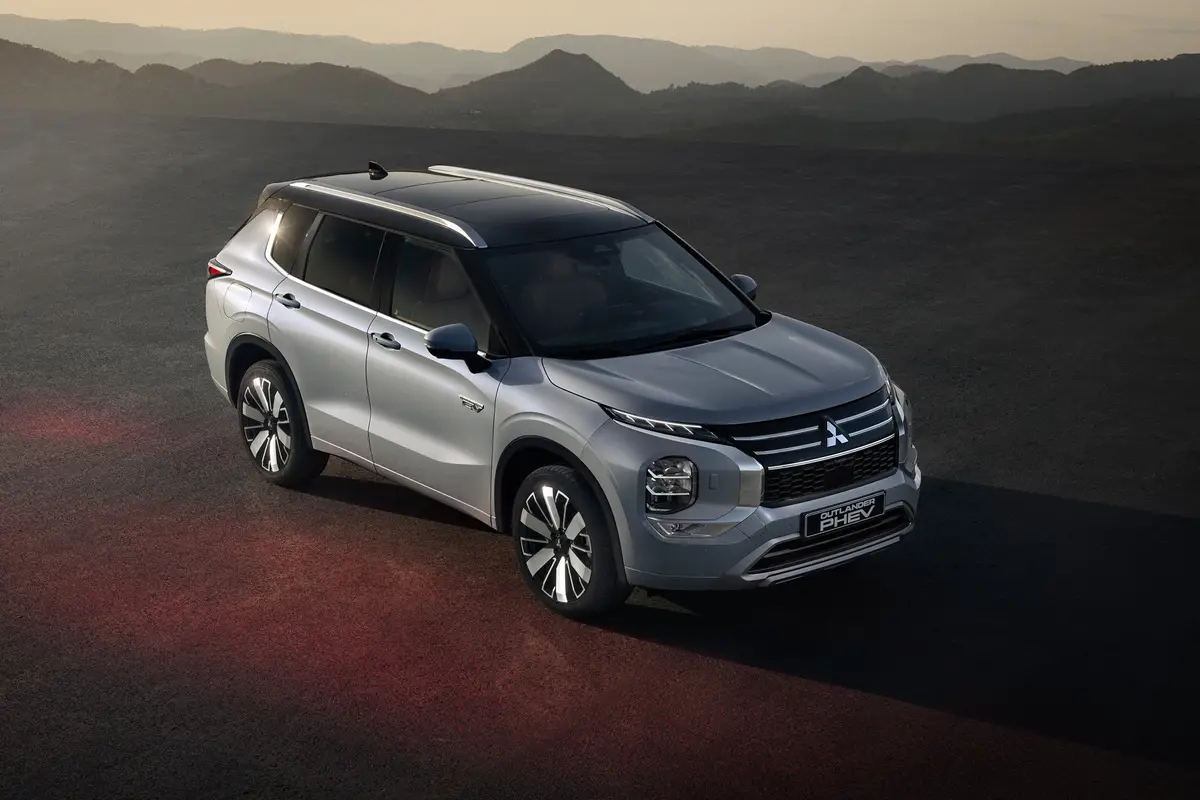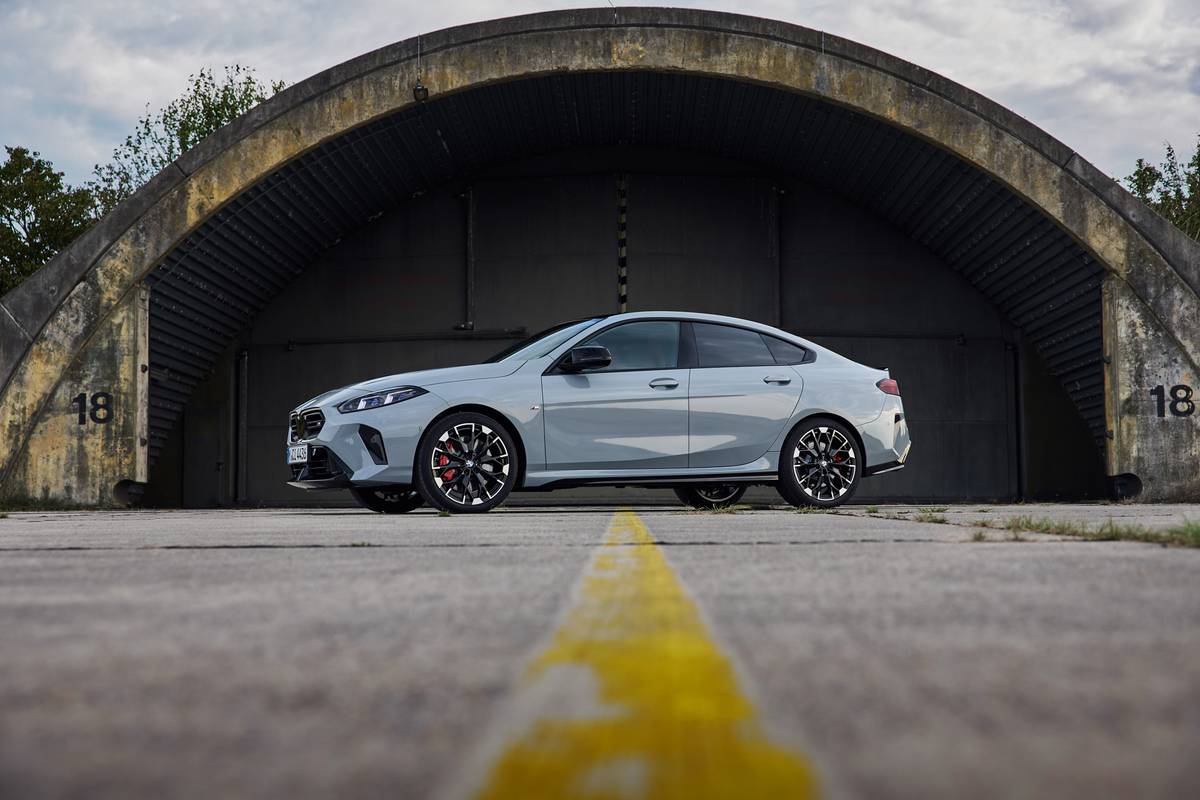Cincinnati.com's view
Not too many passenger cars care more about the folks in the rear seats than those up front. In fact, in most cases, the nether compartment seems like either an afterthought or a torture chamber, at least when filled to the manufacturer’s specifications.
Volvo’s flagship S80 offers an “executive special options group,” which, at $950, transforms the midsize sedan into a compact limousine. A fabulous bargain, the package includes a leveling system, smash-and-grab-proof laminated side windows, microfiltration air system, a 10-CD changer, dynamic stability traction system, specific alloy wheels, heated front seats (don’t want the chauffeur fidgeting on cold days), headlamp wipers and washers, leather seats, DVD/CD player and TV tuner, and, not least, a mini-refrigerator. There’s even a remote control so the rear TV/DVD screen can be operated without making the passenger stretch 6 inches.
The package represents an upgrade beyond what you get in the straight “executive series” S80, which itself represents about $11,000 more self-indulgence than the base, 2.9, series. There are two other series slotted in between, the T6 Series and the T6 75th Anniversary Series.
Volvo considers principal competition for the S80 to be such as the Acura 3.5 RL, Audi A6, BMW 5 Series, Jaguar S Type, Mercedes-Benz E Class, Saab 9-5 and American marques Cadillac Seville and Lincoln Continental/LS, all in the $40K to $50K+ range – low luxury, if you will.
I find the styling of the S80 appealing, even after a four-year run, perhaps because it’s somewhat angular and distinctive, with the rear-flank character bulges. It seems designed by a draftsman rather than a wind tunnel, as too many are these days.
The interior is rich and elegant – not overdone, but with quality materials and attention to detail that bespeak real luxury, not just a simulacrum.
Once you move away from the base series, you get the same 2.9-liter, inline 6 engine block, but now, as the T6 badge subtly connotes, with a new head and twin turbochargers.
So equipped, the engine makes 268 hp (at 5,200 rpm) and 280 foot-pounds of torque (between 1,800 and 5,000 rpm). That represents a more than 35 percent improvement in both categories, well worth having in a luxury sedan that comes in at close to 3,600 pounds, without all the executive series add-ons.
These are light-pressure turbos (borrowing a page from homey rival Saab’s book), designed to spin up fast and have more effect on torque (low-end response) than horsepower (top speed considerations).
The flatness of the torque curve argues to how well Volvo has achieved the mission. For a more apprehensible demonstration, just press the accelerator moderately hard from a dead stop.
Even with the fast-acting traction control switched on, you’ll get a chirp from the tires and just enough head-shaking from all those horses to remind you this is a front-wheel-drive machine. Really stomp on it – even when un der way – and you will get clouds of smoke and some serious torque-steer kickback. Driven with finesse, it feels like a modest-displacement V-8 rather than a forced-air small six. At highway speeds, the torque is always there, ready to shoot you ahead even without dropping down a cog.
After I had fine-tuned the relationship between my right foot and the powerplant, I marked mid-6-second 0-60 times, and that’s hustling for a hefty sedan.
EPA estimates are 18 mpg city, 25 highway – premium unleaded, of course. With quite a bit of legal-speed freeway cruising interspersed with some rustic excursions, I logged 22.2 – not bad, considering how fond I am of the nearly undetectable turbo whine. The only transmission offered is a four-speed automatic. Given the breadth of the torque curve, that works, although I bet the advertising department would like a five-speed to trumpet, and some enthusiasts might prefer a manual.
It has the option of being operated as a semi-automatic, but the implementation is so clumsy you’ll probably prefer to let the brainy, “adaptive” box shift for itself. You have to jerk the console-mounted shifter down and to the left to get into semi-auto mode. Then, you can upshift by pushing forward, downshift by pulling back. The gear thus chosen stays locked in, which can be awkward at times. To get back to full auto, you push the lever to the right and then forward, being careful not to bypass Drive lest you land in Neutral.
Despite having LED readouts for mode/gear selection, it was a pain, and not really necessary except for enhanced compression braking; for that purpose, an overdrive lockout switch on the shifter would be far handier. Even before it had much else to brag about, Volvo was trumpeting its safety. Now that that criterion has made it onto consumers’ checklists, the brawny Swede does not disappoint.
In crash tests conducted by the National Highway Traffic Safety Administration, it got top marks in every category of occupant protection – driver, co-pilot, rear seat, side impact. In the more rigorous 40-mph tests conducted by the Insurance Institute for Highway Safety, it was rated a “top pick” in the midsize luxury car class, garnering top marks in every aspect of crash performance. Unfortunately, it was worst in class when run into barriers at 5 mph, simulating typical minor mishaps. Average damage was a disheartening $1,860 per incident, a number inflated by the need to replace over-eager air bags after a frontal contretemps.
The S80 has two-stage frontal air bags (the initial, partial inflation is followed by a secondary inflation milliseconds later to account for the forward movement of the occupants’ heads), as well as side air bags and side-curtain head-protection bags.
The S80 will serve well in terms of active safety, too. The big 225/50/17 H-rated tires were relentless in their grip, although they squealed under even modest provocation.
The dynamic stability control, which uses computers and sensors to keep the driver from trying to corner unrealistically hard, was fairly unobtrusive and kept enthusiasm from becoming overenthusiasm. The system has a dual modality of engine restraint and a touch of braking force. It can be deactivated.
Volvo did not furnish sizes of the front and rear disc brakes, but they were well up to the job of reining in two tons of hurtling mass when I tried some pseudo-panic stops from 70 mph on sticky pavement. They also provided a pleasingly firm, easily modulated pedal feel. The antilock was swift and efficient, too.
Base price on the S80 Executive Series is $49,950. With the package mentioned earlier, and metallic paint for $400 and freight, total was $51,925.
Payments at that price would be $1,053, assuming 48 coupons, 10 percent interest and 20 percent down. Edmunds.com suggests most folks are beating them down by about 2 grand these days – say 50 large, even.
Quite honestly, if you’re a driving enthusiast, you’d probably prefer one of the cars listed above. The S80 really is more appealing as a ride than a drive. Not that it doesn’t DO everything well – it’s just so comfort-oriented that it provides less driver feedback than some of the hard-edged, and harder-riding – alternatives.
“The Gannett News Service”
Latest news



